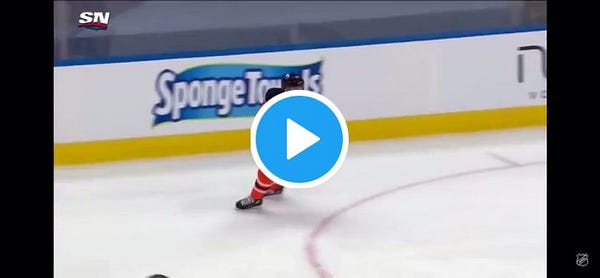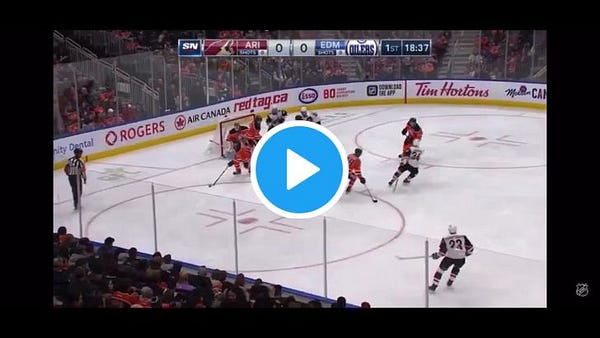Every person who has spent any reasonable amount of time in hockey is familiar with a crossover. It’s when a player steps (read: crosses) over their feet to make a change of direction. They are as old as dust.
In the past several years, though, crossovers have become the source of an innovative and dynamic emergence. To increase speed, change attack angles, and create separation, crossovers are being used in abundance at the NHL level not just in turns, but even in relatively straight lines.
Linear Crossover
Linear = arranged in or extending along a straight or nearly straight line.
So unlike a traditional crossover that goes around in a circle (who doesn’t remember skating “Russian Circles”?), the linear crossover is used in more generally straight lines. Players are crossing their feet to accelerate, as opposed to relying on strides. Here is an example from Nathan Mackinnon going from a standstill to full speed.


Mackinnon employs crossovers to get his initial burst, but then also again at top speed to maintain and build even more speed (super top speed?!).


If you take more forward strides than crossovers with the puck, you'll be easier to defend.
The Ratio
World-renowned skills coach Darryl Belfry did a study comparing the crossover to stride ratio:
Top 25 NHL players crossover once every four strides
Average third- or fourth-line NHL players crossover once every 12 to 14 strides
In the years since, NHL players have continued to further improve their crossover:stride ratios. Players like MacKinnon and Connor McDavid have flipped the script entirely and regularly utilize more crossovers than straightaway strides.


From our recent Hockey IQ podcast with friend of the newsletter/podcast Jack Han,
“Four or more crossovers per forward stride is great. Anything below 2:1 is an opportunity for improvement. If you take more forward strides than crossovers with the puck, you'll be easy to defend.”
Check out that Hockey IQ podcast episode on Spotify, Apple, or our website
Strides are cumbersome and predictable, allowing fleet-footed teams the ability to angle players off with ease. Crossovers are swift and, as we’ve seen, incredibly effective in transition in their own right.
The rise of McDavid has also led to the ascent of the company Power Edge Pro (PEP). Their ‘toys’ are now used across the hockey world and encourage a better crossover:stride ratio. With their worldwide spread has also come a general improvement of the ratio to be more in line with top players of the game.
Increased Efficiency
The liner crossover can also be more efficient than its ‘traditional’ stride counterpart. Remember that MacKinnon video from the beginning? 11 total strides to go the full length of the ice. As an experiment, count how many traditional strides you take to cover the same distance without lateral crossovers (Hint, it’s likely many more).
That efficiency really shows up at the end of the game or the end of each shift when players are fresher. Fresher players make better decisions. Better decisions wins more hockey games.
Another benefit comes from within the stride itself. The stride becomes smoother, and within that smoothness, players are less likely to knock themselves off balance. Thus allowing players to have a clearer focus on making plays.


It’s Not Just For The Top Players
Everyone is getting in on linear crossovers action these days. Players like Derek Brassard and Mikael Backlund are now skating up the ice utilizing nothing but crossovers. Zero forward strides required. Just add water!


Now that you have a better understanding of what a linear cross over is and why its prevalence in the game has grown, we will explore ways and examples of how NHL players such as McDavid, Patrick Kane, and Torey Krug use their linear crossovers to create offense. Read Part 2, “How linear crossovers create offense”.
Further Reading
Did you enjoy this newsletter?
Help us spread the ideas within and share it with the people you care about


